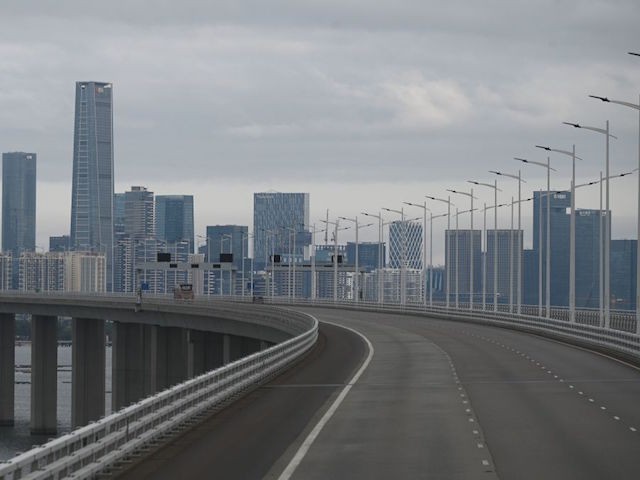Chinese state media on Tuesday declared victory over the coronavirus outbreak in Shenzhen, the tech hub known as “China’s Silicon Valley.”
The city was subjected to severe lockdown measures over the past week, including an order that forced employees to live in their factories so the production lines could keep running.
According to the state-run Global Times, Shenzhen “returned to a normal busy hi-tech hub on Monday after seven days of strict prevention and control measures that included placing all residential communities under closed management, suspending public transportation and closing stores and businesses.”
The Global Times hyperventilated about Shenzhen’s “practice of unwaveringly sticking to the dynamic zero COVID-19 policy and striking a right balance between epidemic control and economy in the battle against Omicron” supposedly filling the Chinese people with pride and confidence, while dispelling “Western media’s smears and doubts of China’s COVID-19 strategy which they believe was under great threat due to the fast spread of the variant.”

A general view of Shenzhen is seen from a bus travelling on the Shenzhen Bay bridge in Hong Kong on February 8, 2020. (PHILIP FONG/AFP via Getty Images)
The Chinese Communist paper planted the blame for Shenzhen’s Omicron outbreak squarely on Hong Kong, which has been “struggling with a fifth wave of outbreak” while Shenzhen “took resolute measures to guard against the risks of imported infections and further spread, including crackdown on illegal crossing, which set an fine example for other port cities.”
This is all somewhat amusing for those who remember the regime in Beijing working furiously to undermine travel restrictions as illogical, hysterical, and a veritable crime against humanity, back when the rest of the world was trying to keep the Wuhan coronavirus from spreading out of China.
Today it is accepted as a matter of Chinese government doctrine that every outbreak is greeted with a strict travel ban on the province, city, or block where it occurred, and China routinely bans foreign travelers. The World Health Organization (W.H.O.), which teamed up with China to undermine travel bans in early 2020, never seems to criticize the travel bans China imposes.
The Global Times on Tuesday quoted tech company managers who promised the week-long shutdown of Shenzhen would have only a “limited” impact on production or pledged to overcome whatever impact they felt by “optimizing the production process and resource investment.”
All of these managers pledged to subject their employees to constant nucleic acid testing and monitor them electronically for absolute compliance. All of them praised China’s “dynamic zero-Covid” policy,” a somewhat flexible term that means lockdowns a bit less severe than last year’s horror shows will be imposed until Chinese health officials decide the public has achieved “herd immunity.”
One of the “dynamic zero-Covid” policies imposed on Shenzhen last week was “closed-loop management,” which means factories were allowed to keep running provided the employees lived on-site for the duration of the lockdown.
The Chinese state paper, in turn, saluted Shenzhen’s tech companies for pitching in to help during the lockdown, such as by providing drones that could deliver food to the quarantined population and “spray disinfection to improve the efficiency of epidemic work.”
The South China Morning Post (SCMP) on Monday reported that part of Shenzhen’s central business district is still shut down, as is Futian, the district closest to Hong Kong. One Futian resident reported seeing drones floating through the district and peeping through windows to monitor the quarantined population.
The SCMP’s account of Shenzhen emerging from its omicron lockdown was far less triumphalist than the Global Times, describing a “frustrated” population that finds China’s infamous electronic monitoring systems onerous, and worries about lost income due to last week’s business shutdowns.

COMMENTS
Please let us know if you're having issues with commenting.